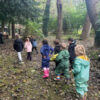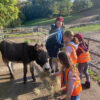
by Nicola Henderson
Godstone Farm
Every year, as Christmas approaches, many of us face the same dilemma: what to buy for our loved ones. Shops are overflowing with shiny new toys, gadgets and trinkets, each promising to be the ‘perfect gift’. But how often do those gifts gather dust on a shelf, or end up forgotten by January? Increasingly, in our busy lives people are realising that the most meaningful presents aren’t objects at all – they’re experiences where we can value time spent together.
Many visitor attractions see firsthand the joy that comes from shared moments and family adventures. Whether it’s watching a child’s face light up as they meet an animal up close, enjoying a day of discovery with grandparents, or creating a new festive tradition together, these are memories that last far longer than anything that comes wrapped in shiny paper. That’s why experience-based gifts – such as gift cards for days out, animal encounters, or tickets to special events – are becoming the new gold standard for Christmas giving.
Memories really can outlast material presents
Think back to your own childhood Christmases. Do you remember the toys you unwrapped each year? A few, maybe, but more likely, your fondest memories are of the moments spent with family, baking mince pies with mum, building a snowman with dad, or visiting a magical event together. That’s the beauty of gifting experiences, they create stories that can be retold, moments that can be treasured and photos that bring a smile for years to come.
A day out, for example, becomes so much more than simply ‘something to do’. It’s the delight of hand-feeding the goats, the fun of playing races in a soft play, the thrill of a tractor ride across the fields and the joy of simply being together away from everyday distractions. Experiences build connections, strengthen relationships and give families the most precious gift of all – time spent together.
Kinder to the environment
In today’s world, we’re all becoming more aware of the impact our choices have on the planet. Every year, millions of plastic toys and novelty gifts are bought, played with briefly, and eventually thrown away, many ending up in landfill. On top of that, the wrapping paper, packaging and batteries all add to the festive waste pile.
Choosing to give an experience instead is not only thoughtful, but also eco-friendly. A gift card, for example, can be tucked into a simple envelope – no need for excessive packaging, ribbons or plastic wrap. By gifting a day out or an event ticket, you’re giving joy without adding to the clutter of Christmas waste. It’s a more sustainable way to celebrate, one that aligns with the growing desire to protect our environment for the next generation – the very children we’re gifting to.
Flexibility for busy families
Another benefit of giving experiences is their flexibility. The festive season can often feel like a whirlwind of school plays, family visits and Christmas dinners. An experience doesn’t demand to be used immediately; instead, it gives families the freedom to plan a trip that suits them. Whether they fancy a winter adventure in January or a springtime visit to a farm, this type of gift is theirs to enjoy at the perfect time. There are so many experiences on offer in the UK, a spa day or driving experience might work for adults whilst days out are popular among children.
For grandparents, godparents or family friends looking to give something meaningful, this flexibility is invaluable. Rather than buying ‘just another toy’, they can give a promise of fun, adventure and quality time together.
Something different
Beyond general entry, experience-based gifts can be truly magical. Imagine the delight on a child’s face when they discover they’ve been gifted a behind the scenes experience, feeding the pigs, grooming a pony or learning more about the creatures they love. These encounters create unforgettable moments and often spark a lifelong interest in animals and nature. Places that offer a variety of different experiences will mean that all budgets can also be catered for.
Reduce stress and increase joy
There’s also a practical advantage to gifting experiences: it can make Christmas shopping less stressful! No more endless trawling through toy aisles, trying to guess which gadgets children already have, or worrying whether clothes will fit. An experience is always the right size, never goes out of fashion and won’t be forgotten after a week!
In fact, studies have shown that people feel happier when they spend money on experiences rather than material possessions. The anticipation of an upcoming day out provides joy before the event even begins, while the memories created extend the happiness long afterwards.
A Christmas that truly means something
At its heart, Christmas is about togetherness, joy and making memories. By choosing to give experiences rather than ‘things’, we can also stay truer to the spirit of the season.
So, this year, perhaps we should rethink our gift lists. Instead of filling stockings with ‘stuff’, why not give the people you love the chance to make memories that last a lifetime? After all, toys break, gadgets age and clothes go out of style – but the memory of time spent together will never fade.
Godstone Farm in Surrey offers enriching outdoor experiences all year round and welcomes a variety of baby animals each spring.
www.godstonefarm.co.uk

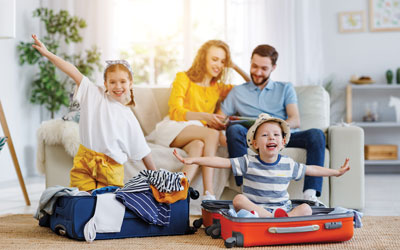
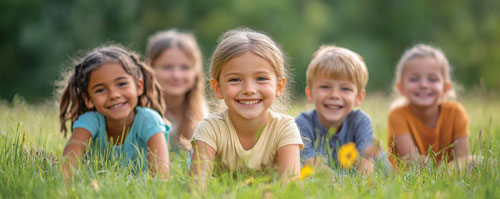
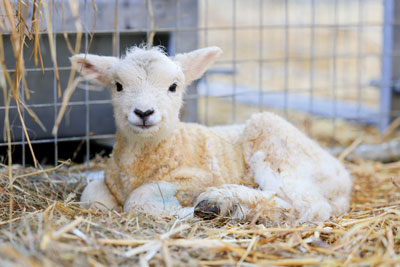

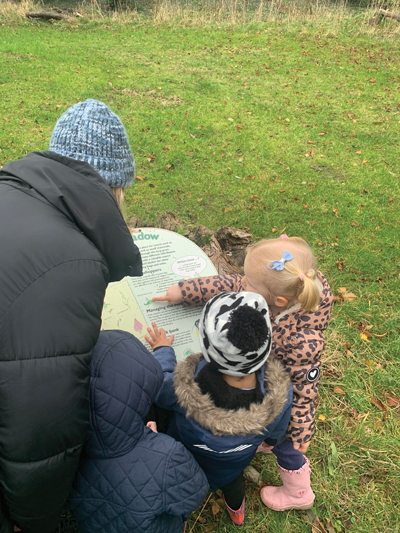


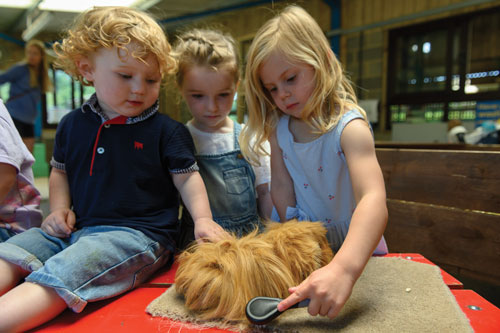
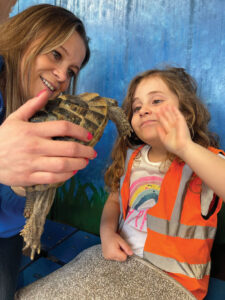 Animals also provide children with lessons about life (reproduction, birth, illnesses, accidents, death, and bereavement). Children have the opportunity to see lambs being born and eggs hatching. Animals provide knowledge in biology. When children spend time around the different animals they begin to understand basic biology and how that translates between animal species. Activities like grooming animals and feeding them, understanding what they eat and how food is digested, develops children’s knowledge and of course, children love discussing poo!
Animals also provide children with lessons about life (reproduction, birth, illnesses, accidents, death, and bereavement). Children have the opportunity to see lambs being born and eggs hatching. Animals provide knowledge in biology. When children spend time around the different animals they begin to understand basic biology and how that translates between animal species. Activities like grooming animals and feeding them, understanding what they eat and how food is digested, develops children’s knowledge and of course, children love discussing poo!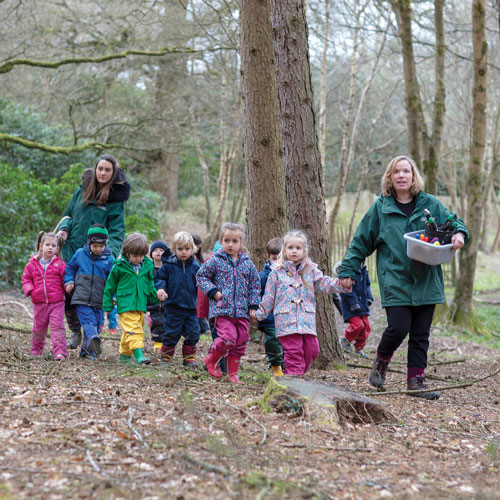
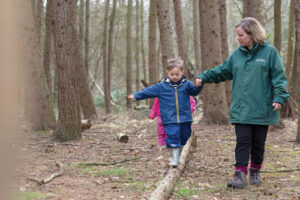 Helping schools to enhance their outdoor learning offering and ensure children can enjoy meaningful and effective lessons, the Forest School Association offers a national accreditation that schools can apply for to deliver both structured and unstructured outdoor sessions. At our school, we have a long-established Forest School programme, led by our own Forest School accredited teachers and trainers, who are able to deliver valuable outdoor sessions for children from the age of two upwards.
Helping schools to enhance their outdoor learning offering and ensure children can enjoy meaningful and effective lessons, the Forest School Association offers a national accreditation that schools can apply for to deliver both structured and unstructured outdoor sessions. At our school, we have a long-established Forest School programme, led by our own Forest School accredited teachers and trainers, who are able to deliver valuable outdoor sessions for children from the age of two upwards.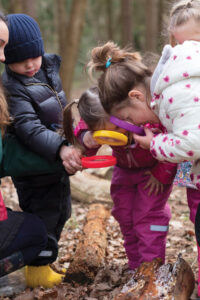 r experience, we have found that outdoor learning is particularly beneficial for younger children. They are given the space to be active and enjoy being noisy and messy, while engaging in play-based learning and exploration. With activities based on small, achievable steps, spending time outside helps to increase self-confidence and independence in the early years. Additional benefits of outdoor learning for younger children include improving their focus and attention, while physically helping to improve their balance, co-ordination and fine motor skills.
r experience, we have found that outdoor learning is particularly beneficial for younger children. They are given the space to be active and enjoy being noisy and messy, while engaging in play-based learning and exploration. With activities based on small, achievable steps, spending time outside helps to increase self-confidence and independence in the early years. Additional benefits of outdoor learning for younger children include improving their focus and attention, while physically helping to improve their balance, co-ordination and fine motor skills.